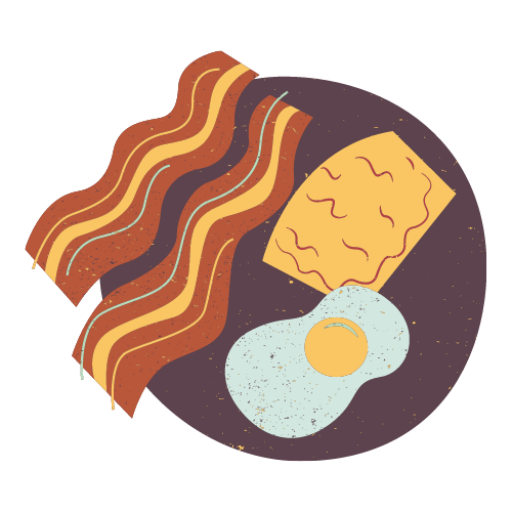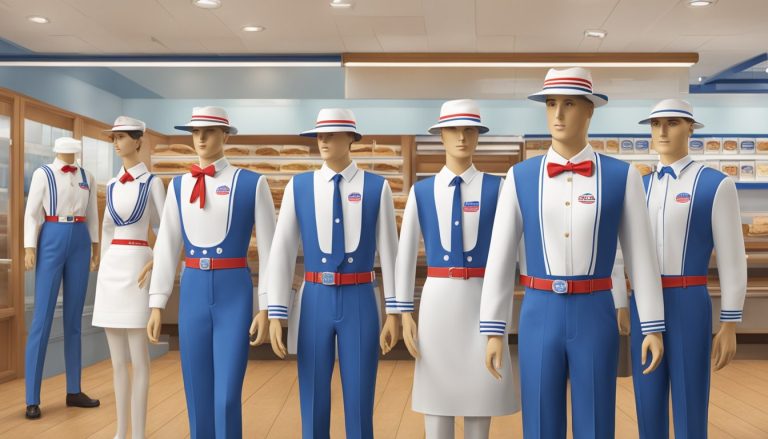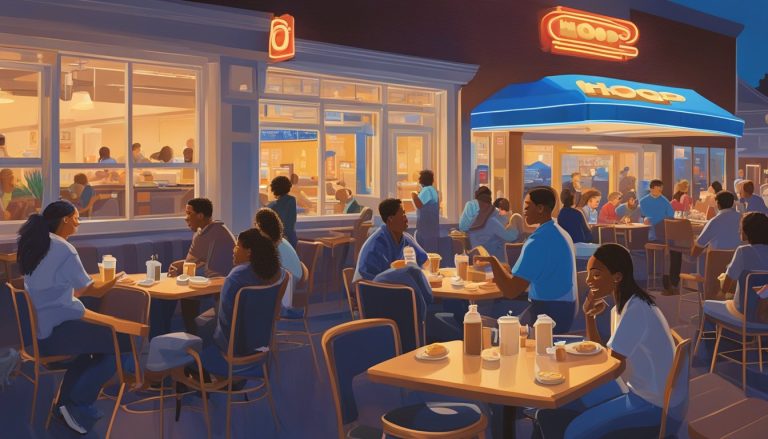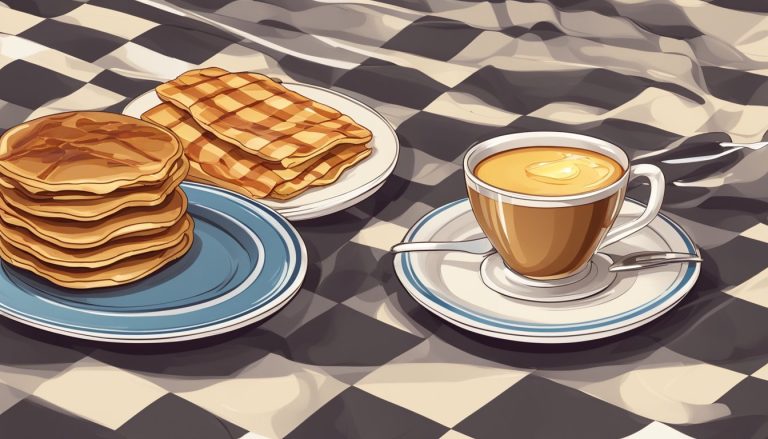Menu photography plays a crucial role in attracting customers and increasing sales for restaurants like IHOP. Capturing the essence of pancakes, waffles, and other breakfast favorites requires skill and artistry to make them look truly irresistible. Effective menu photos highlight textures, colors, and enticing details that make viewers’ mouths water and stomachs growl.
Visual storytelling through restaurant photography goes beyond simply documenting food items. It involves creating an atmosphere and evoking emotions that resonate with potential diners. For IHOP, this means showcasing stacks of fluffy pancakes dripping with syrup, perfectly crisp bacon, and steaming mugs of coffee that transport viewers to a cozy breakfast experience.
Mastering the art of menu photography for IHOP involves understanding lighting techniques, composition, and food styling. Professional photographers use natural light when possible and carefully arrange ingredients to create visually appealing dishes. They may employ tricks like using motor oil instead of syrup for a longer-lasting sheen or adding steam effects to evoke freshness and warmth.
The Importance of Professional Menu Photography

Professional menu photography is crucial for restaurants to showcase their dishes and attract customers. High-quality images can significantly impact a restaurant’s brand identity, customer experience, and marketing efforts.
Enhancing Brand Identity
Professional food photography plays a vital role in shaping a restaurant’s brand image. High-quality menu photos reflect the establishment’s commitment to quality and attention to detail. These images convey the restaurant’s style, ambiance, and culinary philosophy without words.
For IHOP, professional photos can highlight the chain’s focus on hearty, American-style breakfast fare. Crisp images of golden pancakes drizzled with syrup or perfectly plated omelets reinforce IHOP’s brand identity as a welcoming, family-friendly restaurant.
Consistent, professional photography across all menu items helps create a cohesive visual identity. This consistency strengthens brand recognition and builds customer trust.
Improving Customer Experience
High-quality menu photos significantly enhance the customer experience. Clear, appetizing images help diners make informed choices and set accurate expectations for their meals.
For visual learners, photos are particularly helpful in understanding dish compositions and portion sizes. This can reduce ordering anxiety and increase customer satisfaction.
Professional food photography can also spark interest in new or unfamiliar menu items. An enticing photo might encourage a customer to try a dish they might have otherwise overlooked.
In the case of IHOP, vibrant images of specialty pancakes or seasonal offerings can pique customer interest and drive sales of featured items.
Utilizing Photos as a Marketing Tool
Professional menu photography serves as a powerful marketing tool for restaurants. High-quality food images can be used across various platforms to attract and engage potential customers.
On social media, appetizing photos can increase engagement and reach. A mouth-watering image of IHOP’s latest pancake creation could go viral, drawing attention to the brand.
Menu photos are also valuable for email marketing campaigns, website design, and digital advertising. They can effectively communicate new menu items, limited-time offers, or seasonal specials.
In-store displays featuring professional food photography can influence customer decisions at the point of purchase. Eye-catching images of IHOP’s most popular dishes could prompt impulse orders or upsells.
Fundamentals of Menu Photography

Menu photography requires mastering several key elements to create appetizing images that entice customers. Proper lighting, thoughtful composition, consistency across photos, and attention to colors and textures are essential for capturing IHOP’s dishes in their most appealing form.
Comprehending Lighting and Shadows
Natural light often produces the most appealing food photos. When possible, shoot near windows to take advantage of soft, diffused daylight. This illuminates dishes evenly and brings out vibrant colors and textures. For indoor shoots, use artificial lighting to mimic natural light. Position lights at 45-degree angles to the food to create appetizing highlights and shadows. Avoid harsh direct light, which can wash out details. Experiment with backlighting to make pancake stacks glow or create dramatic silhouettes of coffee mugs.
Mastering Composition Techniques
The rule of thirds is a fundamental principle in menu photography. Imagine a 3×3 grid over the image and place key elements along the lines or at intersections. This creates visual interest and balance. Use negative space strategically to draw focus to the main dish. Vary angles to showcase different aspects of the food. Overhead shots work well for flat items like pancakes, while side angles highlight the layers of a sandwich or omelet.
The Importance of Consistency
Maintaining a cohesive look across all menu photos creates a professional appearance and reinforces IHOP’s brand identity. Use similar lighting setups, backgrounds, and props for each shoot. Develop a consistent color palette that complements IHOP’s branding. Standardize photo editing to ensure all images have a uniform style. This consistency helps customers easily navigate the menu and sets expectations for the dining experience.
Colors and Textures in Food
Vibrant colors and varied textures make food photos more appealing. Enhance natural food colors through proper lighting and careful editing. Garnish dishes with colorful ingredients to add visual interest. Capture the fluffy texture of pancakes, the crisp edges of bacon, and the smooth sheen of syrup. Use props and backgrounds that complement, not compete with, the food’s colors and textures. White plates often work well to make colorful breakfast items pop. Consider the overall color harmony of each photo to create a visually pleasing menu.
Advanced Food Styling Strategies
Food styling elevates IHOP menu photography from ordinary to extraordinary. Skilled stylists employ clever techniques to make pancakes fluffier, eggs glossier, and bacon crispier. These advanced methods transform plain dishes into irresistible visual feasts.
Selecting the Right Props and Background
Props and backgrounds play a crucial role in food styling. Choose plates, utensils, and linens that complement IHOP’s branding and enhance the food’s appeal. Opt for neutral tones or subtle patterns to avoid distracting from the main dish. Consider using textured surfaces like weathered wood or smooth marble to add depth.
For pancake stacks, use plates with a slight lip to contain syrup drips. Position coffee mugs strategically to frame the food. Experiment with different napkin folds to add visual interest without overwhelming the composition.
The Role of Chefs in Food Presentation
Chefs are essential collaborators in food styling. Their expertise ensures dishes are prepared to perfection before the camera captures them. IHOP chefs work closely with stylists to achieve the ideal texture, color, and shape for each menu item.
Chefs may use special techniques to maintain food freshness during long photo shoots. They might undercook eggs slightly to prevent yolks from setting, or brush melted butter on pancakes to keep them looking moist. These small adjustments make a big difference in the final image.
Captivating Food Shots with Textures
Texture is key to creating appetizing food photos. Stylists use various methods to enhance and highlight different textures in IHOP dishes. For crispy bacon, they might arrange pieces to stand up, showcasing the rippled edges. Pancakes can be styled with small forks to create attractive ridges and valleys.
To capture syrup’s viscosity, stylists may use a thicker corn syrup mixture that flows more slowly. For omelettes, they might gently separate egg curds to reveal fluffy interiors. These techniques add depth and dimension to flat images, making viewers almost feel they can reach out and touch the food.
The Art of Capturing Culinary Creations
Menu photography transforms dishes into visual experiences that entice customers. Skilled photographers use composition, lighting, and styling to showcase IHOP’s offerings in mouthwatering detail.
Creating a Visual Culinary Experience
Food photographers collaborate with chefs to bring IHOP’s menu items to life. They carefully arrange each element, considering color, texture, and plating. Proper lighting enhances the dish’s appeal, highlighting glistening syrup or perfectly golden pancakes.
Props and backgrounds are chosen to complement the food without distracting from it. A stack of fluffy pancakes might be paired with a rustic wooden table and a steaming cup of coffee.
Photographers use techniques like selective focus to draw attention to key ingredients. They may capture steam rising from a hot entree or capture the moment syrup drips onto a crispy waffle.
Menu Images That Tell a Story
Effective menu photos go beyond merely showing food – they evoke emotions and memories. A cozy breakfast scene with a plate of eggs and bacon can remind viewers of lazy weekend mornings.
Photographers consider the context of each dish. A refreshing summer salad might be styled with bright, airy elements, while a hearty dinner entree could have warmer, more intimate lighting.
Action shots add dynamism, like capturing a fork cutting into a juicy steak or cheese stretching as a slice of pizza is lifted. These images help customers imagine themselves enjoying the meal.
Consistency in style across menu photos creates a cohesive visual brand for IHOP. This unified look helps reinforce IHOP’s identity and makes the menu easy to navigate.
The Technical Aspects of Food Photography

Mastering the technical elements of food photography is crucial for creating appetizing IHOP menu images. Proper focus and post-processing techniques can elevate ordinary photos into mouthwatering masterpieces.
Focusing Techniques for Clarity
Achieving sharp focus is essential in food photography. Use a tripod to stabilize the camera and prevent blur. Select a wide aperture (low f-number) to create a shallow depth of field, highlighting specific elements of the dish.
Experiment with manual focus for precise control. Focus stacking can be useful for dishes with multiple layers or textures. This technique involves taking multiple shots at different focus points and combining them in post-processing.
For close-up shots of pancakes or waffles, consider using a macro lens. This allows for extreme detail capture, showcasing the fluffy texture and syrup drizzles.
Post-Processing and Editing for Perfection
Post-processing is where good photos become great. Start by adjusting basic elements like exposure, contrast, and white balance. Enhance colors to make dishes appear more vibrant and appetizing.
Use selective editing to draw attention to key areas. Brighten highlights on syrup or butter to make them glisten. Sharpen textures of crispy bacon or golden hash browns.
Remove distractions or imperfections with spot healing tools. Adjust shadows to reveal details in darker areas of the plate. Apply subtle vignetting to direct focus to the center of the image.
For consistency across menu photos, create and apply preset filters. This ensures a cohesive look that aligns with IHOP’s brand identity.
The Business Side of Menu Photography
Professional menu photography is a crucial investment for restaurants seeking to boost sales and attract customers. Quality images can significantly impact diner perceptions and ordering decisions.
Collaborating with a Professional Photographer
Hiring an experienced food photographer is essential for creating appetizing menu images. Professional photographers possess specialized equipment and lighting techniques to showcase dishes at their best. They understand how to style food to make it look fresh and enticing.
When selecting a photographer, restaurants should review portfolios and discuss their menu vision. Clear communication about the desired aesthetic and target audience helps achieve optimal results. Scheduling photoshoots during off-peak hours minimizes disruption to restaurant operations.
Photographers may bring food stylists to enhance dish presentation. Props and backdrops that align with the restaurant’s branding can elevate the overall look. High-quality images allow for versatile use across menus, websites, and marketing materials.
Incorporating Feedback for Continuous Improvement
Regular evaluation of menu photography’s impact on sales and customer behavior is vital. Restaurants can track which dishes receive more orders after new photos are added. Social media engagement metrics offer insights into which images resonate most with audiences.
Gathering customer feedback through surveys or comments provides valuable input. This data helps identify which visual elements are most appealing or areas for improvement. A/B testing different photo styles or compositions can reveal preferences.
Staying current with food photography trends ensures menus remain fresh and competitive. Periodic updates to images keep the visual content engaging for repeat customers. Collaborating closely with the photographer allows for quick adjustments based on feedback and sales data.
Elevating the Culinary World with Creativity
Creativity plays a vital role in transforming ordinary dishes into extraordinary culinary experiences. IHOP’s creative leads infuse innovation into every aspect of menu photography, elevating the presentation of classic breakfast fare.
Through artful plating and styling, IHOP’s signature pancakes and waffles become visual masterpieces. Skilled photographers capture the perfect angles and lighting to showcase textures and colors.
Creative garnishes and props add visual interest while reinforcing IHOP’s brand identity. A drizzle of syrup or a dusting of powdered sugar creates mouthwatering appeal in images.
Strategic use of negative space draws the eye to key elements. Careful composition guides viewers through each photograph, highlighting the most tempting aspects of every dish.
Seasonal ingredients inspire new menu items and photographic concepts throughout the year. Fresh fruit toppings and festive garnishes keep imagery current and enticing.
IHOP’s culinary team collaborates closely with photographers to translate their vision from kitchen to camera. This partnership ensures images accurately represent the dining experience while sparking customer cravings.
Creative food styling techniques like selective focus and motion blur add dynamism to still photographs. These methods capture the essence of a steaming cup of coffee or melting pat of butter.




